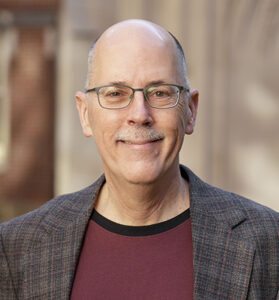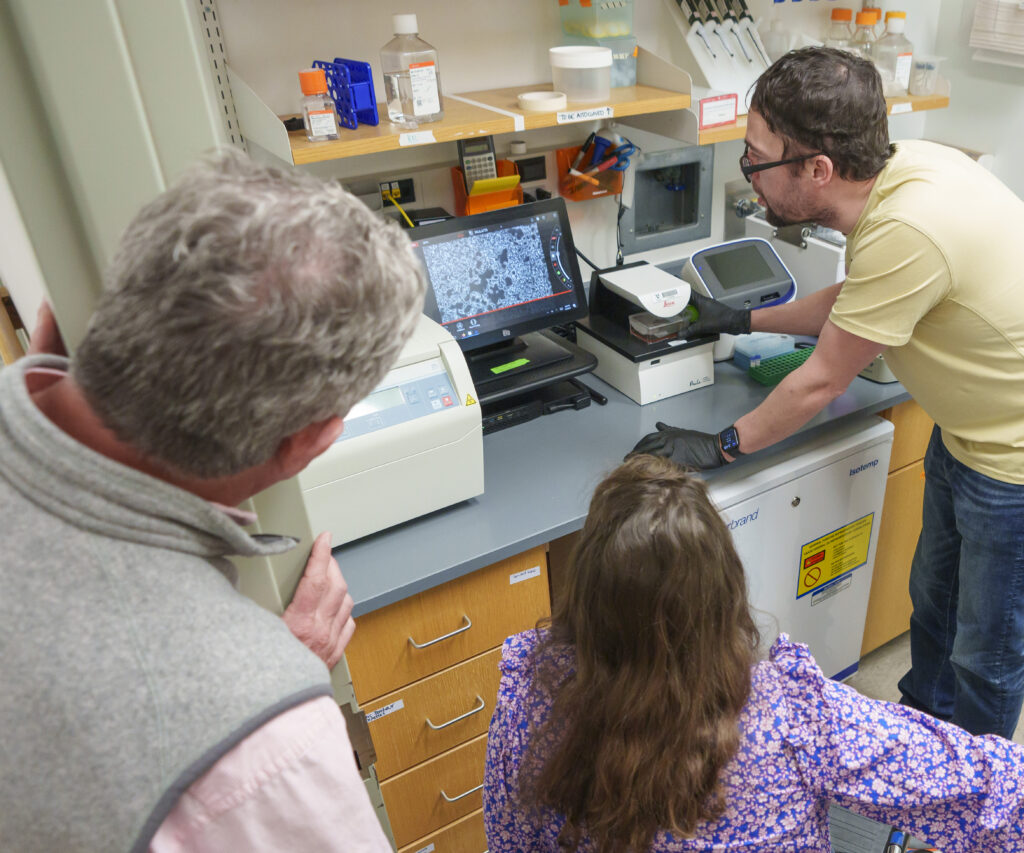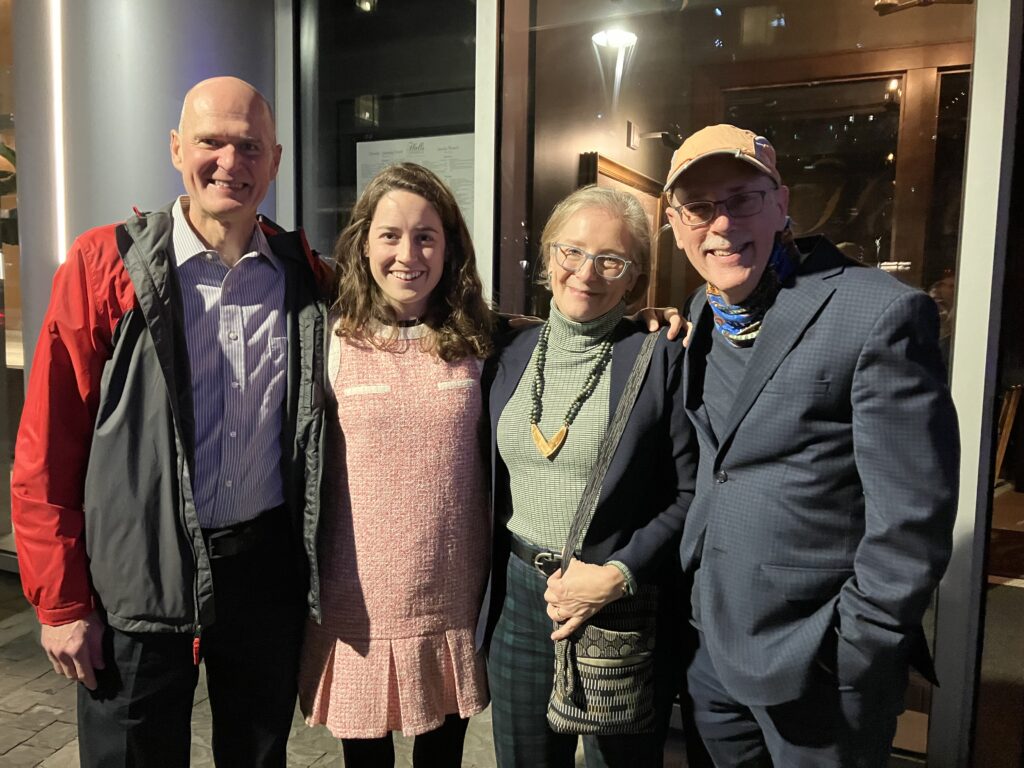Eloise Schlafly first noticed something wasn’t right at age 14. “My initial symptoms were pretty basic,” she said. “I couldn’t keep up with friends, and I was tripping and falling a lot. My feet were always a problem, and my mom was constantly trying to find comfortable shoes for me. Not long after, an athletic director called my mom saying I wasn’t like the other kids.”
A genetic test in January 2006 at Washington University in St. Louis led to a diagnosis of Charcot-Marie-Tooth disease, an inherited disorder that causes damage to motor nerves transmitting signals from the brain to muscles and sensory nerves communicating sensations like pain, heat, and cold to the brain. Symptoms, such as muscle weakness, can occur at any age but usually are noticeable in adolescence or early adulthood.
The disease named for the three physicians who identified it in 1886 doesn’t affect the brain or spinal cord, just the peripheral nerves, causing muscle weakness and atrophy in all of the limbs. It can result in foot deformities, loss of hand or feet muscle, foot or lower leg weakness, or numbness, tingling, or burning sensations in hands and feet. At present, there is no known cure, although CMT is rarely fatal. Physical and occupational therapy, orthopedic devices, and pain medications can help mitigate the risk of injury from falls or disease progression.
Unfortunately, patients aren’t the only ones affected by the onset of CMT. “It has really impacted all aspects of my life. Over time, because of the progression, I have stopped playing all physical sports. I can’t run. I can’t play Pickleball. I can’t go to workout classes with friends,” Schlafly said. “Lots of social things in life are physical.” Due to extreme instability, she cannot do things as simple as climbing steps or stepping into a shower because of the danger of falling. Although she can walk short distances with the help of a friend’s arm, she often opts for a wheelchair for longer distances. Her friends and family also “piggy-back” her places, pull her off the ground, button her clothing, and run errands so she doesn’t have to.
One state away from Schlafly’s home, as her physical condition and her environment presents her with constant challenges, Vanderbilt University Professor of Biochemistry and Vice Dean of Basic Sciences Chuck Sanders and Professor of Biochemistry Bruce Carter have been hard at work searching for therapies, if not a cure, for CMT.


A ready-made match
“Around the year 2000 I decided I wanted to overhaul my lab’s research to focus on human membrane proteins that are known to cause disease” Sanders said. “But I wanted to start with a protein and a disease that no one else in my broad area—biochemistry, biophysics, and chemical biology—was already working on. I stumbled onto peripheral myelin protein 22, an integral membrane protein that causes most cases of Charcot-Marie-Tooth disease, and thought it was just what I was looking for. Only much later did I realize how very common CMT is, even though many people have never heard of it.”
In fact, CMT affects about 1 in 2,500 people. Schlafly, in particular, suffers from a rare and often severe subtype of CMT called type 1E, caused by mutations in a gene that codes for peripheral myelin protein-22 or PMP22. The most common type of CMT is type 1A, which occurs when too much PMP22 is made when the PMP22 gene is duplicated, but there are some types of CMT that don’t involve PMP22 at all.
Schwann cells, the “bodyguards” of nerve cells, wrap around nerve fibers, providing an insulation – a fatty substance called myelin – which helps messages travel quickly along the nerves. Additionally, Schwann cells aid in regenerating damaged nerves. In simpler terms, they help our nerves send messages faster and assist in fixing them when they are injured.
CMT develops when nerve cells don’t get myelinated properly. Carter’s lab had been studying Schwann cells for some time before he began thinking more closely about CMT following a nephew’s diagnosis with CMT.
“He has a very severe form and is confined to a wheelchair with very limited mobility,” Carter said.
The first fifteen years of CMT study by the Sanders lab were devoted to the type E disease mutant forms of PMP22 with a special focus on the one Schlafly carries. “My all-time favorite result from my lab was a study conducted by postdoc Jon Schlebach, now on the faculty at Purdue University, showing that type E CMT is caused by mutations that destabilize PMP22, resulting in its misfolding and mistrafficking in cells, leading to disease,” Sanders said.
Schlebach’s discovery was published in a 2015 Journal of the American Chemical Society paper. After the completion of Schlebach’s work, Sanders shifted his lab’s focus to the common type 1A form of the disease.
Also, about 15 years ago, “Chuck approached me about an idea he had to look for small molecules to help PMP22 fold correctly,” Carter said. “We began collaborating on studying PMP22 and its function and dysfunction in Schwann cells and have been working together ever since.”
Together, the Sanders and Carter labs have made significant progress in their research. “Bruce is an internationally distinguished expert on the molecular biology of the peripheral nervous system, so his broad expertise perfectly complements my own,” Sanders said. “Nothing could be easier and more sensible than for our labs to collaborate.”
In 2020, Sanders and then–graduate student Justin Marinko discovered that, under the most common Type 1A CMT conditions, the excessive level of production of the wild type protein due to the extra copy of its gene oversaturates the protein folding pathways in Schwan cells, which means that most of the protein gets trapped within the cell, where it becomes toxic and disease causing. More recently, Sanders postdoctoral fellow Katherine Stefanski, Ph.D. staff member Geoffrey Li, and graduate student Mason Wilkinson have generated some of the strongest evidence to date that the main driver of CMT1A is this accumulation of misfolded wild type protein.
“Although we don’t know why having an extra copy of the PMP22 gene prevents normal myelin formation, preliminary data from our labs suggest that the underlying etiology of CMT1A may be due to a cellular stress response,” Carter said. The duo hypothesize that the PMP22 aggregates cause the activation of a stress pathway in the Schwann cells that shuts down the production of new proteins and prevents the Schwann cells from making myelin.
Venturing beyond the lab
In September 2023, Stefanski, Carter, and Margaret Read, the general manager of corporate alliances for Vanderbilt’s Center for Technology Transfer and Commercialization, attended a global conference sponsored by the CMT Research Foundation, which is where Read first met Schlafly.
“Eloise and I connected over both of us attending Rhodes College and discussed the possibility of things we could do together to raise awareness of CMT Type 1E,” Read said.
In February 2024, Schlafly, her fiancé Alex Brohammer, and her parents, Christy and Ted Schlafly, came from St. Louis to visit Nashville on business and reached out to Read to see if they could make a stop at Vanderbilt.
The group met Sanders, Carter, and many of their lab members, including Stefanski, who gave Schlafly a tour of the Sanders lab.

“We showed her the facilities and the instrumentation that we use to conduct biophysical and cell biology studies on PMP22, which include CMT drug screening projects” Stefanski said. The tour also covered a high-content microscope, cell culture facilities, various biophysical instruments, and the NMR Core Facility. Michael Goodman, Geoffrey Li, Wilkinson,and Stefanski all had a chance to talk to the Schlafly family about their projects.
Carter lab member Pramod Gowda showed Eloise and her family Schwann cells forming myelin under a fluorescent microscope. In addition, McKenzie Jones showed them mice that are a model of CMT1A and how their grip strength can be measured to track the progress of the disease.
“I had heard Eloise and other patients speak at the CMT Research Foundation Convention,” Stefanski recalls, “so I was inspired to include her particular form of CMT in my future work,” Stefanski said. “During her visit to Vanderbilt, I shared with her the details of a research proposal that I recently submitted to the NIH, which is inclusive of her type of CMT.”
“I had no expectations,” Schlafly said of the visit. “You’re nervous because you don’t know what to expect and excited to see whatever it is you get to see. I had seen a lab before, but I must say, it’s a pretty humbling experience to go from thinking there is no one at all who knows about your really weird, rare disease to walking into a lab and learning that everyone there is in some way working to cure my issue.”

Although the research was “over my head,” Schlafly was glad that the Sanders and Carter labs were able to explain it. “Each of their specific projects will be building blocks for a cure. Looking in the microscopes, seeing the mice, seeing Geoffrey’s big magnet and what he can do with it, you realize this is not a simple thing!”
“I think I can speak for the entire team when I say that it is incredibly motivating to hear from patients, especially in the realm of a rare disease, to remind us how important it is that medical science does not leave anyone behind,” Stefanski said.
Sanders found Schlafly’s visit both encouraging and inspiring. “It is one thing to know that you are studying a disease that afflicts a great many people, but meeting someone like Eloise adds a more personal perspective. My lab wants to make progress because we care about furthering research to improve human health, but now it’s personal.”

An eye toward the microscope, an eye toward the horizon
Meanwhile, the research continues. This work has been supported by Ancora Innovation LLC—a portfolio company of certain funds managed by Deerfield Management Company, L.P. that supports Vanderbilt University’s innovative life science research. The Sanders and Carter labs have been pursuing early-stage drug discovery for the past three years and have no plans to stop until they get one or more compounds in the clinic. “We already have some really interesting compounds but they are still a long way from the clinic,” Sanders said. In addition to previous funding from the National Institute of Neurological Diseases and Stroke and support from Ancora, the labs have ongoing funding from the Charcot-Marie-Tooth Research Foundation. “We are super grateful to all our funders,” Sanders said.
When asked if Vanderbilt’s research gave her hope for a therapy for this disease, Schlafly responded with an enthusiastic “One-thousand percent! Bruce, Chuck, Margaret, Sanders lab members Katherine, Michael, Geoffrey and Mason, and Carter lab members Pramod and McKenzie —they are the real deal!” she said. “A therapy is going to happen, and I won’t be surprised when the Carter lab, Sanders lab, Margaret, and Vanderbilt are at the epicenter of it.”
Keep Reading:
Vanderbilt biochemists reveal the cause of Charcot-Marie-Tooth disease—too much of a good thing
Vanderbilt-Ancora partnership advances research for Charcot-Marie-Tooth disease
Vanderbilt scientists, research translation experts attend CMT Global Research Convention
Conformational Stability and Pathogenic Misfolding of the Integral Membrane Protein PMP22